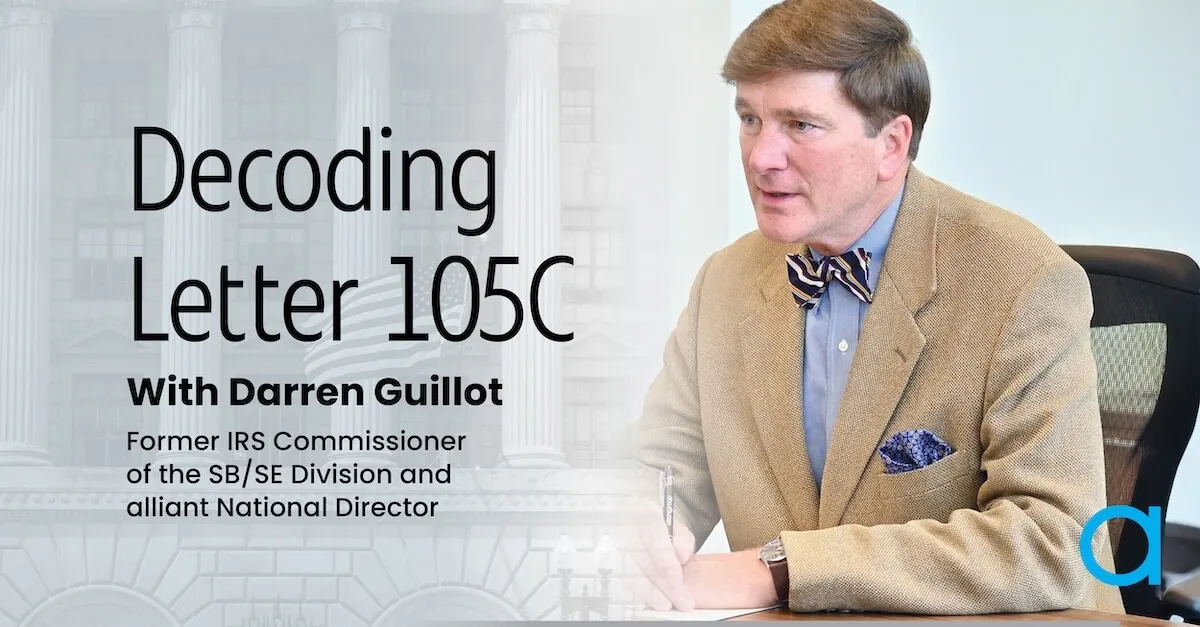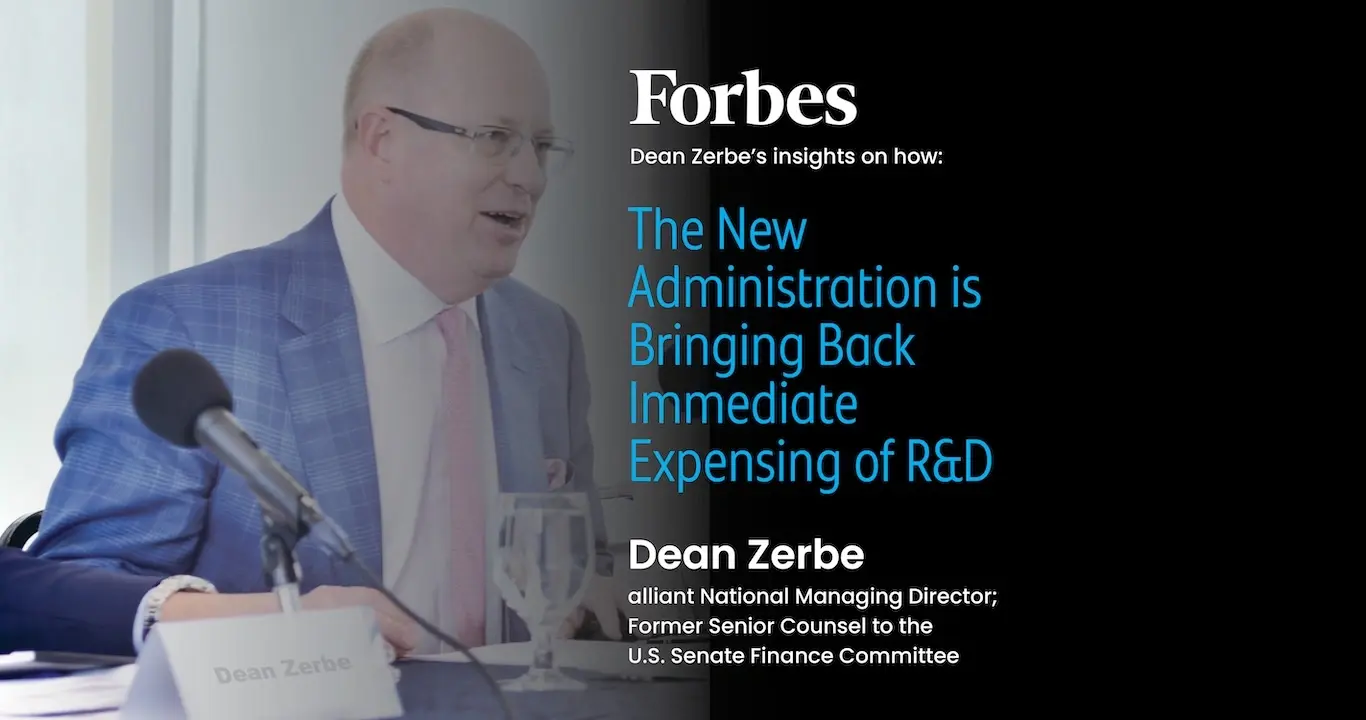The Internal Revenue Service issued notice IR 2022-183, warning all business owners to be wary of third parties manipulating them into claiming the Employee Retention Credit (ERC) when they may not qualify. Often these pop-up shops advise employers to claim the credit even if they are not eligible or they will advise a business to claim more than they are entitled.
The ERC is still the most valuable tax incentive available to business owners, but they need to be careful choosing their provider. These faceless here-today-gone-tomorrow firms should be avoided. Here’s everything you need to know.
Claiming ERC
The ERC is a refundable tax credit available to employers who have experienced an impact due to government mandates issued during the COVID-19 pandemic. Employers eligible for the Employee Retention Credit must have experienced at least one of the following:
- A decline in revenue of at least 20% relative to 2019.
- A partial shutdown due to COVID-19-related government orders restricting travel, commerce, and meetings.
Due to the complex nature of the credit, the IRS has cautioned employers to carefully review their ERC eligibility requirements before beginning the claim process. But many employers are being courted by third party providers who are promising quick and easy money, with no consideration for the many factors required to properly calculate an ERC refund.
These pop up shops are quick to say a business can receive $26,000 per eligible employee for impacts such as supply chain issues or social distancing but they’re either hiding the fine print or are blithely unaware.
Here are just some things pop-up ERC providers are not telling their clients:
- Not All Business Impacts Qualify – While impacts such as supply chain disruptions can qualify as a partial suspension, businesses must demonstrate that a COVID-related governmental order is responsible for a full or partial suspension of business operations.
- Not All Orders are Equal – Proof of a corresponding government mandate is required to claim the ERC but not all mandates are equal. Some mandates are merely guidelines or suggested practices. Many OSHA guidelines for instance are government issued but do not qualify.
- Qualified Impacts with Qualified Orders May Still Not Qualify You – Even if your business was affected by a government order, you still may not be eligible. IRS Notice 21-20 requires that there be a “more than nominal impact” on a business due to a government order to qualify for ERC. Most fly-by-night ERC providers are ignoring this requirement.
- Claiming Other Incentives Can Reduce Your ERC – While it is now true that you can claim ERC in addition to PPP, the two incentives can have an effect on one another. Likewise, any wage-based incentive such as WOTC or R&D can change how much you receive in ERC. If your provider is not asking about these other incentives, be wary.
How pop-up ERC stores may be misleading business owners:
In the IRS-issued notice, the service states, “Employers warned to beware of third parties promoting improper Employee Retention Credit claims.” Here are the top three ways providers are scamming business owners:
- Fraudulent Claims: The ERC is only available to businesses that have faced a full or partial suspension of operations due to COVID-19-related orders or a significant decline in gross receipts. Unfortunately, many third-party providers are convincing business owners they qualify when they do not.
- Overclaiming the Credit: The ERC is calculated based on qualified wages paid, up to $26,000 per employee. There are several factors in determining the refund amount including actual wages paid, duration of qualifying period and whether other incentives, such as PPP have been claimed. Unfortunately, many firms are doing basic calculations and advising employers to take substantially larger credits than they should.
- Upfront Fees: Many ERC providers are charging businesses upfront fees before they will even evaluate a business. Many have even claimed that this practice is required by the IRS. That is simply not true, you should not be paying upfront fees for an ERC calculation.
Business owners must look out for schemes involving hefty upfront fees or direct solicitations. Be very cautious when providing these new ERC providers with your personal or financial information; instead, carefully research any offers or services before agreeing to them.
Here are some ways to safeguard from ERC scams:
- Do not provide personal or financial information to unknown individuals or websites.
- Be cautious of unsolicited phone calls, emails, or texts claiming to be from the IRS or offering ERC assistance.
- Do not pay an upfront fee for ERC assistance.
- Ask your provider if they can correlate a qualifying order to the impacts on your business.
- Ask your provider if they know the difference between a guideline and a mandate.
- Ask your provider if they understand “more than nominal impact” and ask they explain how they would calculate that in your case.
- Ask your provider if they have accounted for other incentives like PPP or WOTC in their credit calculation.
Apart from these, business owners can now report illegal ERC claim-related activities by submitting Form 3949-A.
Employers can also report instances of fraud and IRS-related phishing attempts to the Treasury Inspector General for Tax Administration at 800-366-4484.
If your small business qualifies for the ERC benefit, it is important to pick a firm with a good reputation for tax representation and accounting. alliantgroup stands for ERC claims with professionalism, ethics, and customer service, backed by insights from former IRS Commissioners, former IRS Division Commissioners and industry experts. To find the out the truth about your ERC claim, get in touch with us today.
Reach out today if you want the truth about your ERC claim.


